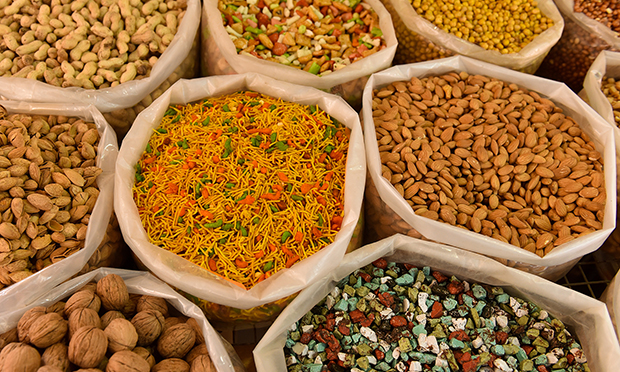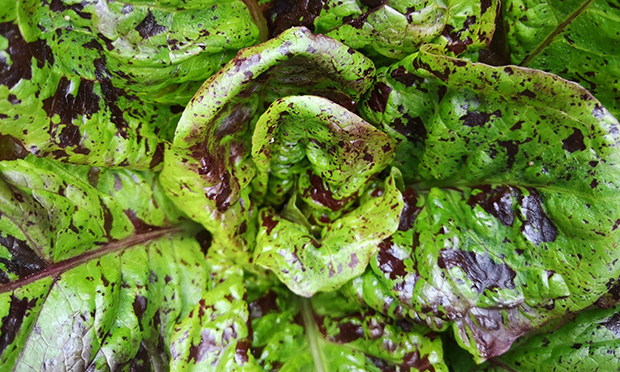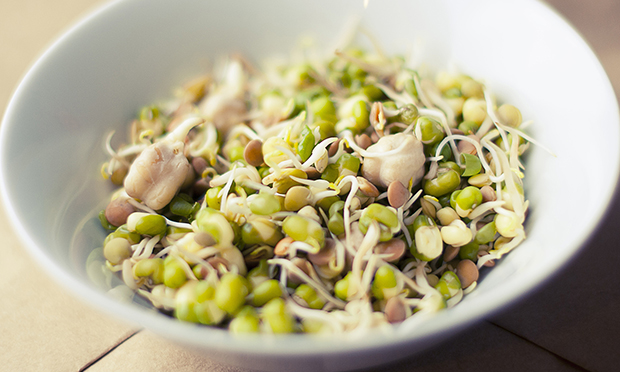The Citizen Gardener: ‘A lack of plant diversity means one in five species could be under threat’

Now we have tipped over the edge of the year and passed the solstice, it’s time to look ahead to new growth, flick through seed catalogues and fantasise about how much we are going to grow this year and how beautiful it all will be.
But with the industrialisation of seed production our choices would seem to be limited both on an agricultural and domestic scale.
According to the UN’s Food and Agriculture Organisation (FAO) report on biodiversity in farming 2019 there is a big decline in the biodiversity of crops, livestock and wild food (bit.ly/2T8ojzd).
More than 6,000 plant species have been developed for food but only nine account for 66 per cent of total food production. These are rice, wheat, potatoes, soybean, maize, cassava, sugar beet, sugar cane and oil-palm fruit.
The FAO says that with a greater dependence on fewer varieties comes increased risk to health, nutrition and, at worst, complete crop failure.
Research by Kew Gardens in 2019 showed that plant diversity has been decreasing at the rate of three species a year since 1900 with the extinction of nearly 600 plants – 500 times more than would occur naturally.
Even taking into account the emergence of new species and hybridisation of others, they say this is an underestimation and that around one in five plant species is thought to be threatened with extinction worldwide.
As ever, climate change and loss of habitat contribute to this decline.
On a domestic level, too, growers have fewer varieties to choose from – from a smaller number of providers.
It is estimated that four seed firms produce over 60 per cent of global proprietary seeds: Corteva, ChemChina, Bayer and BASF – companies that, coincidentally, produce herbicides and pesticides.
Bayer alone controls 29 per cent of the seed market according to the International Institute for Sustainable Development.
That’s a very small number of companies in control, in effect, of food supplies, with weak competition.
The commercially produced seeds we do rely on have been bred to be reliable, uniform, big croppers, which is what we growers want.
What we lose sometimes is flavour, adaptability and diversity, which are important for plant health, resilience to climate change and species loss. But it also means we also have less chance to raise our own plants adapted to our local conditions from our own seed because many of the seed varieties we do have are F1 hybrids (bred for different qualities from different ‘parents’) and won’t come true if we save and sow them.

For thousands of years growers saved their own seed but in a couple of generations we have lost the skills – and the means, because of patents and F1s – to do so.
Hybrid seeds, first developed in the 1920s, were popular with farmers because they could provide higher yields of more uniform plants.
Seed companies (themselves a fairly recent development along with seed catalogues) loved them because farmers had to buy new seed every year. And that trend has increased over the decades.
So how do we, as our prime minister might say, take back control?
– Choose seeds from open-pollinated varieties. This means plants that are naturally pollinated by the wind, insects or sometimes gardeners by hand; they are more likely to be adapted to local conditions and you will be able to save them as they will grow true to the parent. If you are want to save seeds, avoid F1s. They are marked on the packet but not always prominently. A list of suppliers can be found at bit.ly/2MYDUgP
– Save seeds at the end of the season (many community gardens run seed-saving classes at the end of the summer).
– Get seeds from a seed swap. The biggest and oldest in the country is in Brighton. The seeds are locally grown and, as it happens, we’re organising a bus to go there on 2 February. Tickets are available for £15 at bit.ly/2QPELl5
– Support a local seed bank where growers can donate seeds for community use. The London Freedom Seed Bank (bit.ly/35wixK2) can help with setting up a seed bank. Or support an international one: Kew’s Millennium Seed Bank thankfully has saved 40,000 global species for us (bit.ly/2Fpsmin).
– If you are really ambitious, develop your own locally adapted plants, like the Bloody Marvel lettuce which has been bred in south London by artist Richard Galpin (richardgalpin.co.uk) with the London Freedom Seed Bank. The lettuce they have bred is suited to the local London conditions.
In Hackney, we used to have a variety of turnip which was much admired and as famous as the Fulham parsnip or Battersea asparagus.
One day, perhaps we’ll return to local distinctive varieties and resurrect the Hackney turnip!
Sprouts are not just for Christmas

As I have perused the fascinating articles by fellow Citizen columnist Gillian Riley over the past months, I was particularly interested in the history of the chick pea, which has become a big part of our diet.
Apparently 40 per cent of Britons have a pot of hummus in the fridge – almost twice as much as any other country
There is one commercial producer of chickpeas in the UK, the innovative Hodmedods (hodmedods.co.uk). They also grow lentils, quinoa and chia seeds.
We can also grow these seeds on a small scale at home. I grew some one year from shop-bought dried seeds. They are attractive plants growing into small feathery bushes with pods. The peas are unlikely to grow really big so you can eat the pods whole like edamames.
If you are impatient to grow now, sprouting seeds are nutritious and easy.
You can try sprouting all sorts of kitchen cupboard pulses – lentils, dried peas, chickpeas, aduke, mung, alfalfa. They take three or four days to sprout. Make sure you rinse them every day. You can sprout seeds in a large jam jar with holes in the lid (put your rinsed seeds in about 1/3 full, cover with lukewarm water and soak overnight, then empty and rinse. Repeat over several days). To get reliable results I use a plastic tiered sprouter I’ve had for many years. If I was to buy one now I would probably get teracotta.
Kate Poland is an award-winning community gardener. She was chosen to be the UK’s first ever postcode gardener in E5 as part of Friends of the Earth’s 10xGreener project. For more information, head to cordwainersgrow.org.uk and friendsoftheearth.uk
